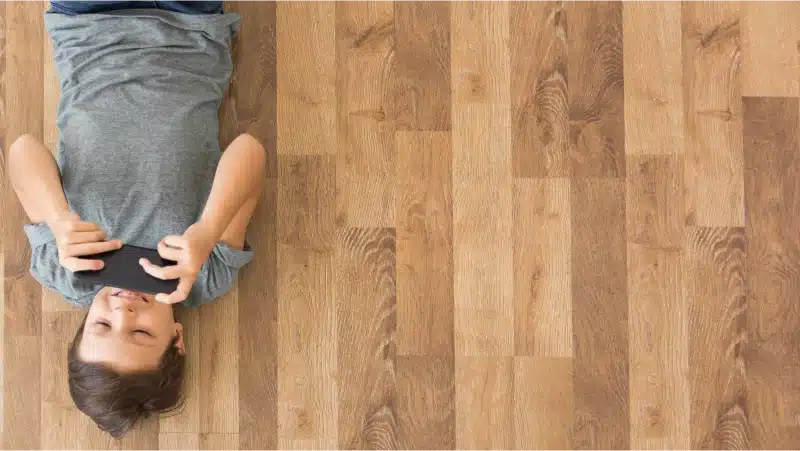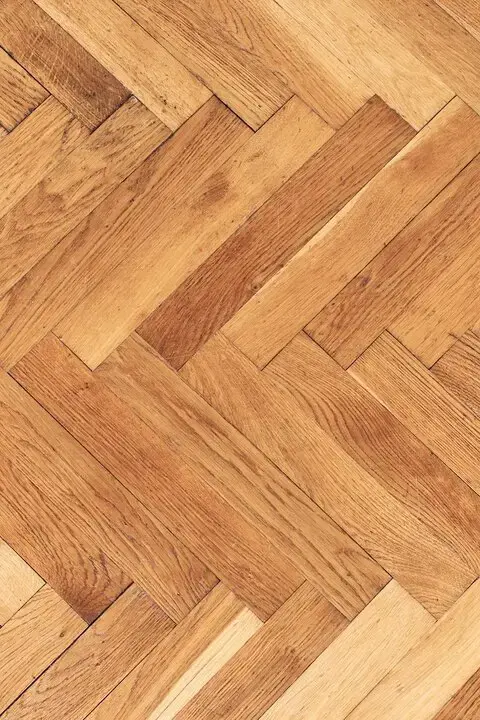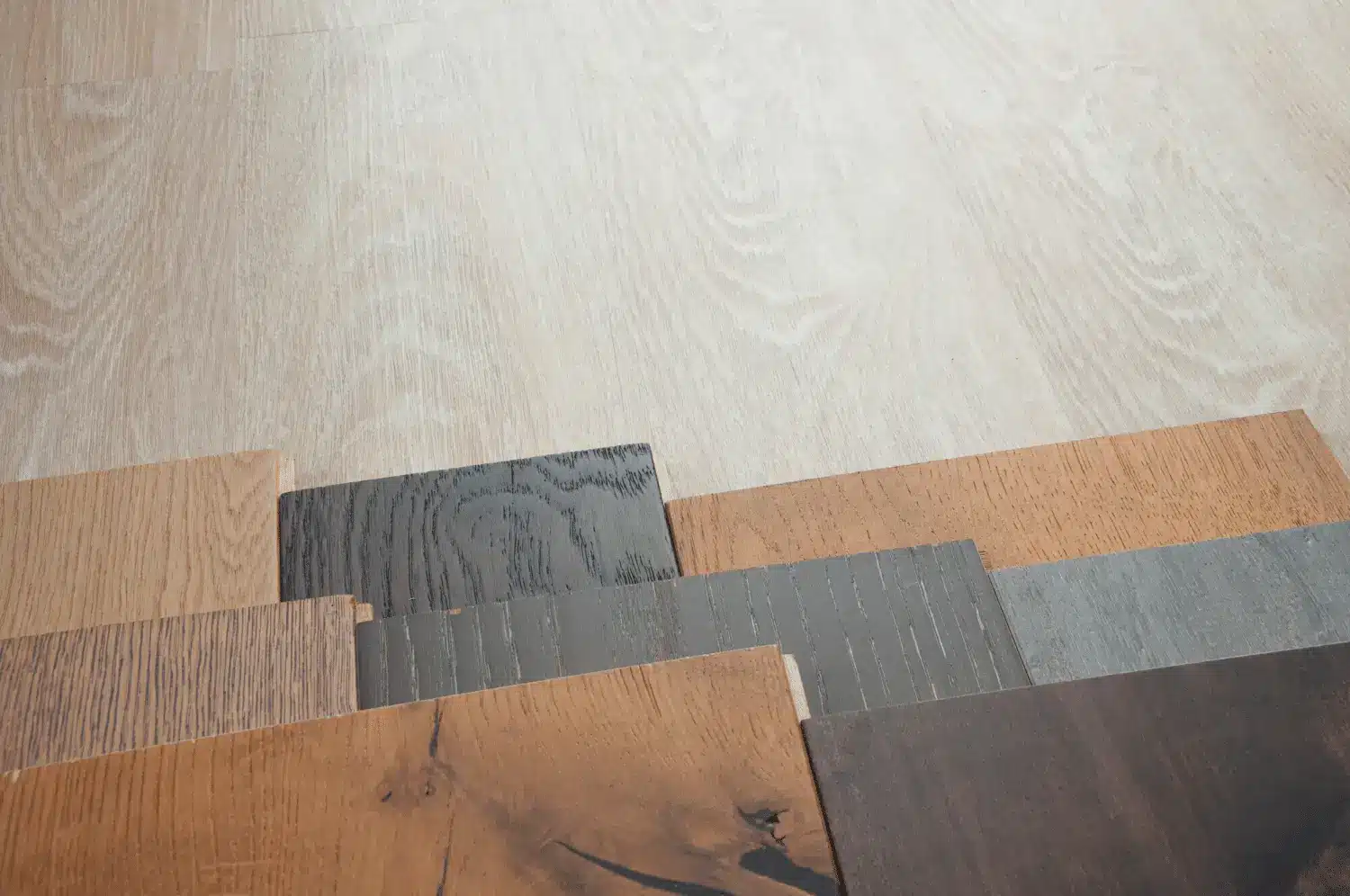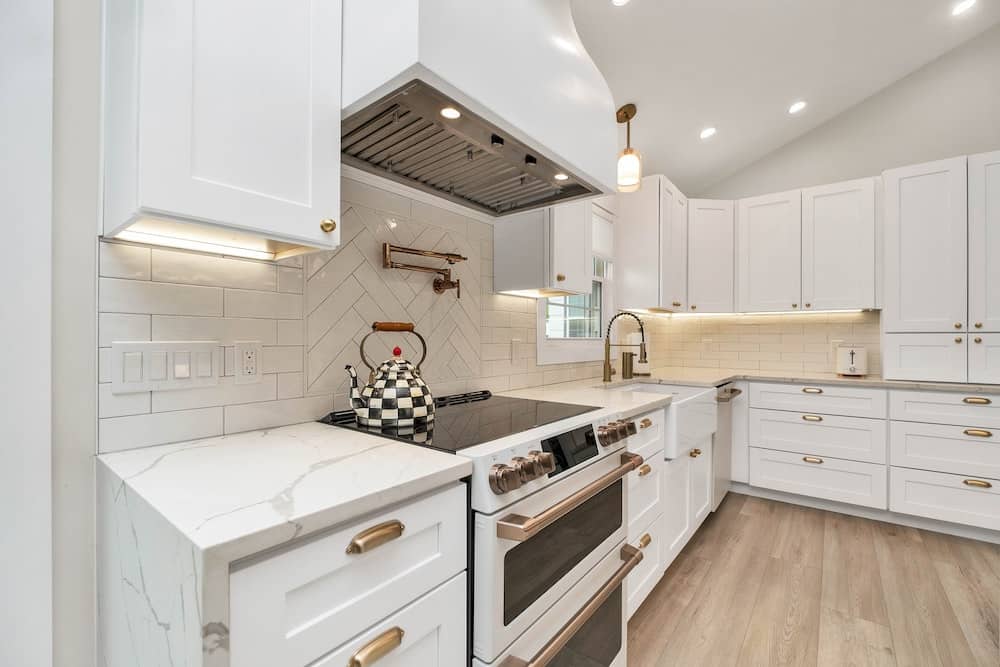Creating a flawless vinyl floor is more than just laying the vinyl planks on your subfloor. An essential part of the preparation process is deciding on the right underlayment. But what exactly should you put under vinyl flooring?
This comprehensive guide will walk you through the ins and outs of choosing and installing the ideal underlayment for your vinyl plank flooring.
- What is Luxury Vinyl Flooring Underlayment?
- Do You Need an Underlayment For Vinyl Flooring?
- What Goes Under Vinyl Floors?
- Assessing The Benefits: Why Use Underlayment For Luxury Vinyl Flooring?
- How To Install Underlayment
- Wrapping Up: The Best Underlayment For Your Vinyl Floor
- Frequently Asked Questions
- Do you put anything under vinyl flooring?
- Does luxury vinyl plank flooring require underlayment?
- What goes between subfloor and vinyl flooring?
- What is the best underlayment for luxury vinyl plank flooring?
- What base does vinyl flooring need?
- What happens if you don’t put underlayment under vinyl plank flooring?
- Can you put vinyl plank floors directly on subfloor?
- Do you need to install underlayment for vinyl plank flooring?
- Can you lay vinyl flooring without underlay?
- How do you prepare a floor for luxury vinyl flooring?
What is Luxury Vinyl Flooring Underlayment?
Before diving into the nitty-gritty details, let’s clarify what underlayment is. In essence, underlayment is a layer of material sandwiched between your subfloor and your finished flooring. It’s a crucial component of your flooring structure, which includes the joists, subfloor, underlayment, and the finished flooring surface.
The primary role of underlayment is to provide necessary moisture control, sound deadening, warmth, and to minimize deflection (the bend or sag in the floor caused by loading). Most modern vinyl flooring comes with an attached underlayment or pad, often with a built-in moisture barrier—unless the pad is cork.
If the vinyl flooring product you choose doesn’t have an attached underlayment, you can almost always install directly over the subfloor without one. But to maximize softness, warmth, moisture proofing, and noise reduction, an underlayment is key.

Do You Need an Underlayment For Vinyl Flooring?
The first step in deciding what to place under vinyl flooring is to determine if you need an underlayment at all. To figure this out, inspect the vinyl planks you’re planning to install. If your planks already have a pad-attached underlayment, you most likely won’t need an additional one, unless the flooring manufacturer’s installation instructions allow for it.
However, if your vinyl flooring doesn’t have a pad-attached underlayment, adding one is highly recommended. This is especially true for rooms with concrete or wooden subfloors, where an underlayment can significantly improve comfort, acoustic performance, and moisture prevention.
What Goes Under Vinyl Floors?
Now that we’ve established the need for an underlayment, the next question is – what goes under vinyl flooring? The answer to this largely depends on the type of subfloor and the specific needs of your space. Here are some common types of underlayment you can use:

Foam Underlayment
Foam is a cost-effective underlayment choice that provides some cushioning and limited insulation. It’s perfect for plywood subfloors but remember, it’s not a moisture barrier and can act as a water trap, leading to mold and musty odors.
Felt Underlayment
Felt is a popular underlayment choice, offering better sound control than foam and a variety of uses. It provides better insulation and has the option to include an attached vapor barrier, making it ideal for concrete subfloors and roofs.
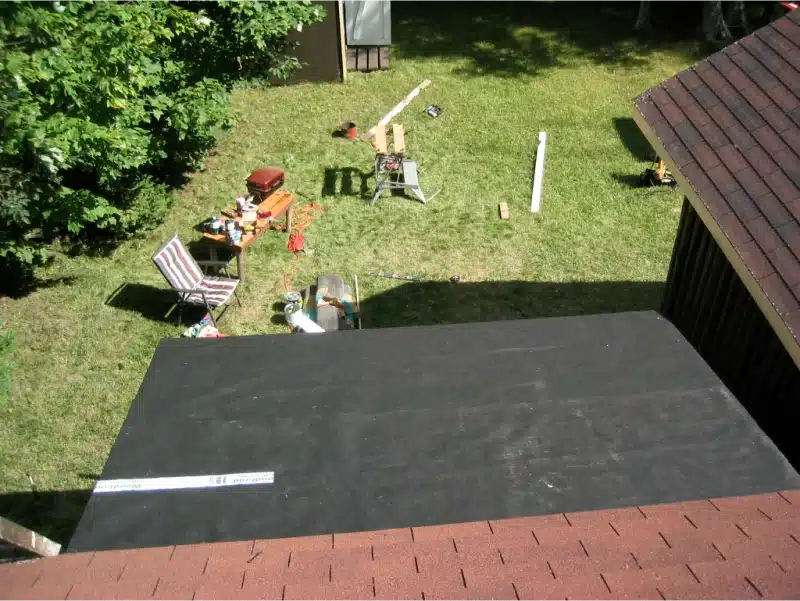
Cork Underlayment
Cork is an excellent option for reducing noise in your home. It’s dense and can help hide imperfections in the subfloor. However, cork is not a moisture barrier and will retain moisture, which can lead to mold formation, especially if it isn’t properly installed.

Particle Board Underlayment
Particle board is an inexpensive way to lay a level base under vinyl flooring. However, it’s ineffective against moisture and is relatively fragile, so ensure you have a solid subfloor beneath it.
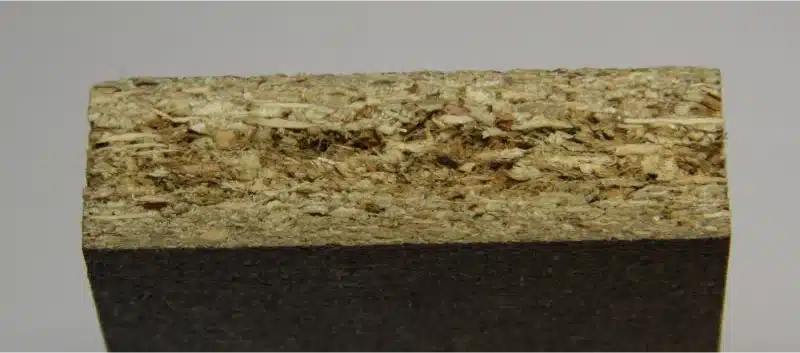
Plywood and OSB Underlayment
Both plywood and oriented strand board (OSB) provide a nice, level base for LVP and LVT floors but don’t offer warmth or cushioning. OSB offers better durability than plywood and is a good choice for wood subfloors.
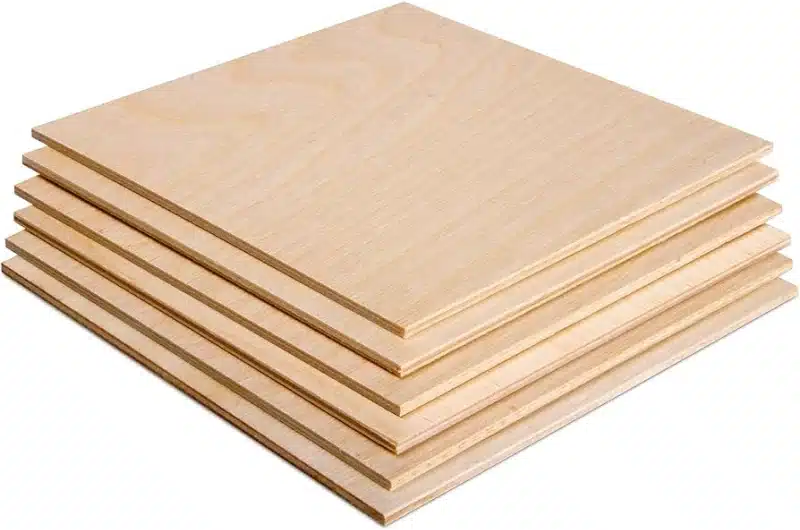
Assessing The Benefits: Why Use Underlayment For Luxury Vinyl Flooring?
The benefits of using an underlayment for your vinyl plank flooring are manifold. Here are some key advantages:
Sound Reduction
Underlayment can significantly reduce the noise produced by footsteps, shifting furniture, and dropped objects. It contributes to a quieter and more tranquil home, making it an essential component, especially for multi-story buildings.
Moisture Protection
Underlayment serves as a moisture barrier, protecting your vinyl flooring from potential water damage. This is especially crucial when installing vinyl flooring in wet areas like laundry rooms, bathrooms, or kitchens, or over a concrete subfloor.
Improved Comfort
Underlayment adds an extra layer of cushioning to your vinyl flooring, making it more comfortable to walk on. This can be particularly beneficial in homes with young children or elderly residents.
Thermal Insulation
Underlayment can help keep your floors warm, especially during the colder months of the year. This is a boon if you’re installing vinyl flooring over a cold concrete subfloor.
How To Install Underlayment
Before installing vinyl plank flooring, one must consider installing the underlayment. When it comes to installing underlayment for your vinyl plank flooring, the process is relatively straightforward. Begin by ensuring that your subfloor is clean and dry. Roll out the underlayment and ensure the seams run perpendicular to the long dimension of the planks to avoid any voids under the joints.
Remember, underlayment seams should have a minimum four-inch separation from the seams of the finished flooring products. Install the flooring according to the flooring manufacturer’s installation instructions. It’s crucial to follow these instructions to the letter to avoid damaging the floor or voiding the warranty.

Wrapping Up: The Best Underlayment For Your Vinyl Floor
The choice of underlayment for your vinyl plank flooring ultimately depends on your specific needs and the conditions of your space. However, experts often recommend foam or felt underlayment for their sound reduction, protection from moisture, and insulation properties.
Remember, what you put under your vinyl flooring can significantly impact the longevity, comfort, and performance of your flooring. So, take the time to choose the right underlayment and ensure proper installation for a flawless and long-lasting vinyl floor.
Ready to remodel your home with the perfect vinyl flooring? Visit Jung Tile to find the best options for your needs and get expert advice on installation. They’re your go-to resource for all things flooring, from underlayment choices to vinyl plank selections.

Frequently Asked Questions
Do you put anything under vinyl flooring?
Under vinyl flooring, underlayment is essential for moisture control, sound deadening, warmth, and minimizing floor deflection. Even if some vinyl flooring comes with an attached underlayment, additional underlayment may enhance these benefits.
Does luxury vinyl plank flooring require underlayment?
The need for underlayment with luxury vinyl flooring depends on the specific product. If the vinyl flooring already includes an attached underlayment, additional underlayment might not be necessary. However, if there’s no built-in underlayment, adding one can enhance comfort, sound insulation, and moisture protection. Always consult the manufacturer’s recommendations for the best outcome.
What goes between subfloor and vinyl flooring?
Between the subfloor and vinyl flooring, you can use materials like foam, felt, cork, or particle board as underlayment, depending on your needs and subfloor type.
What is the best underlayment for luxury vinyl plank flooring?
The best underlayment for vinyl flooring varies; foam offers extra cushioning, felt provides sound control and insulation, and cork is great for noise reduction, but not a moisture barrier.
What base does vinyl flooring need?
Vinyl flooring needs a smooth, clean, and dry base, which can be a well-prepared subfloor or a suitable underlayment, to ensure stability and evenness.
What happens if you don’t put underlayment under vinyl plank flooring?
Without underlayment, vinyl plank flooring may lack comfort, soundproofing, and moisture protection, leading to a less satisfactory floor performance and potential moisture issues.
Can you put vinyl plank floors directly on subfloor?
You can install vinyl plank flooring directly on a subfloor if it’s smooth and level. However, underlayment is recommended for added benefits.
Do you need to install underlayment for vinyl plank flooring?
Installing underlayment for vinyl plank flooring is advisable, especially if the vinyl planks do not come with an attached pad, to enhance comfort and moisture protection.
Can you lay vinyl flooring without underlay?
Vinyl flooring can be laid without underlay, especially if the vinyl comes with an attached pad, but using an underlay can enhance floor performance.
How do you prepare a floor for luxury vinyl flooring?
Prepare to install vinyl flooring by ensuring the subfloor is clean, dry, and level. Any gaps or unevenness should be corrected. When installing underlayment, it should be laid out properly, avoiding voids under the joints, and the seams should run perpendicular to the vinyl planks.


